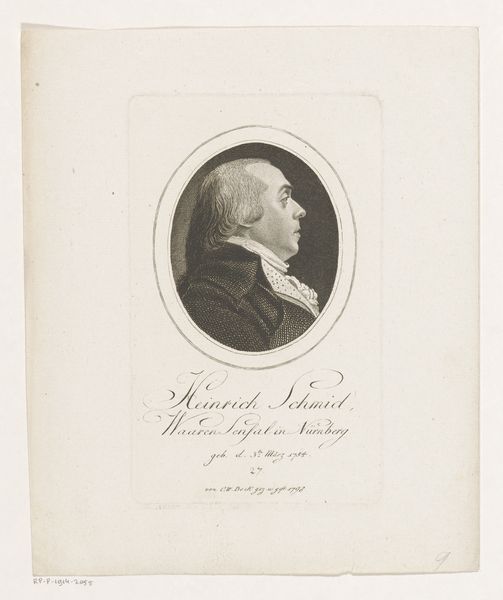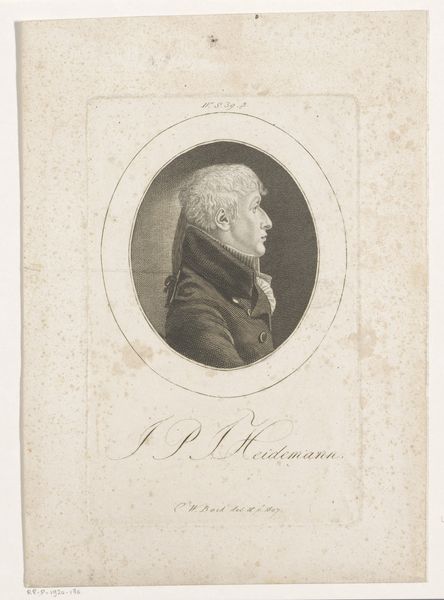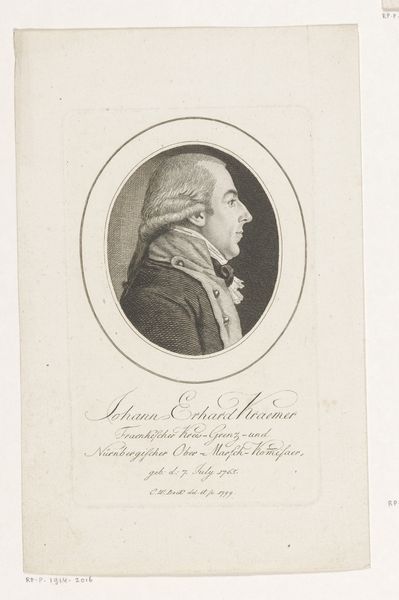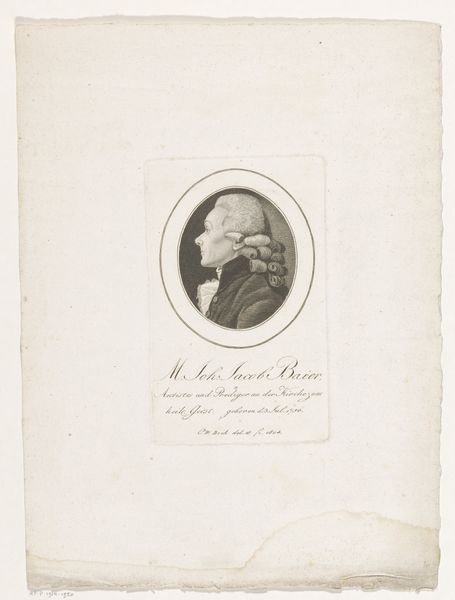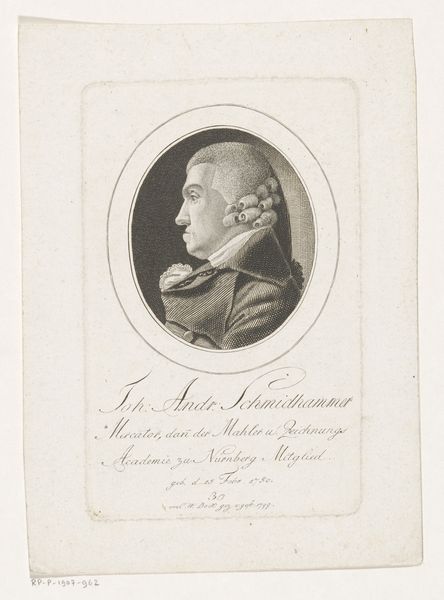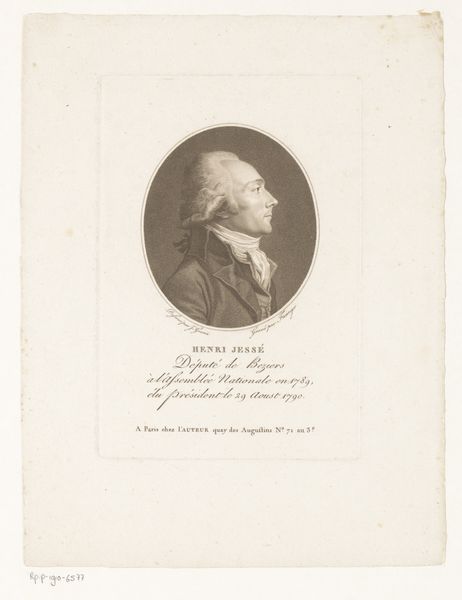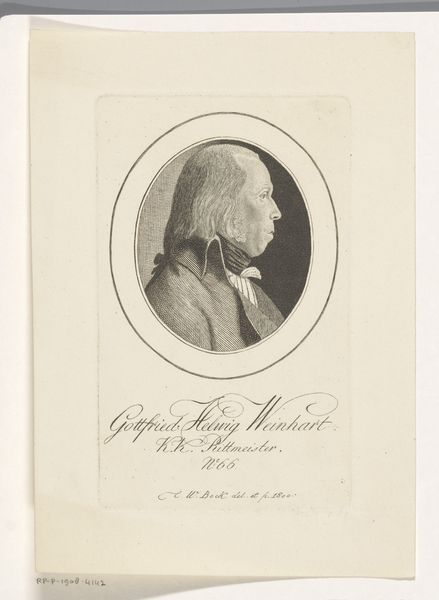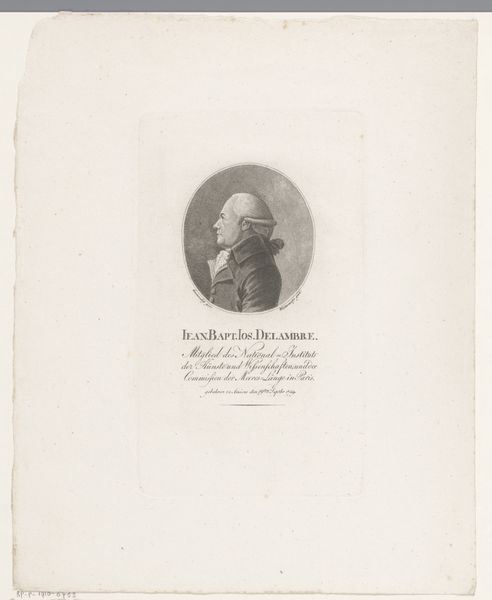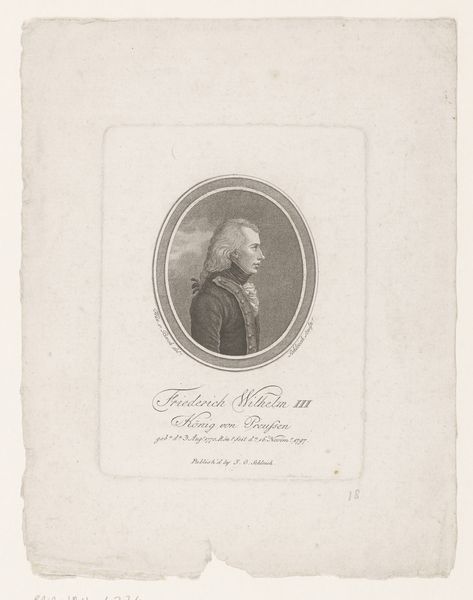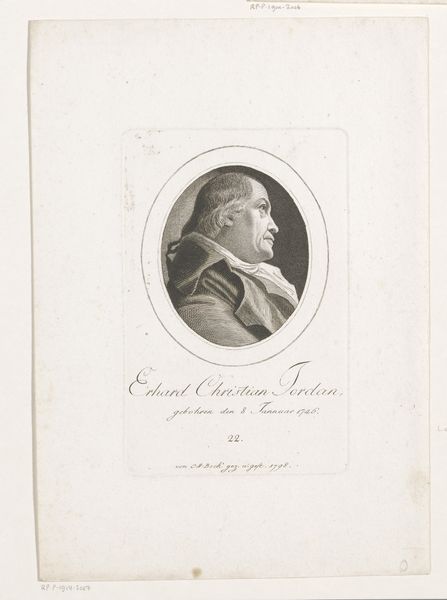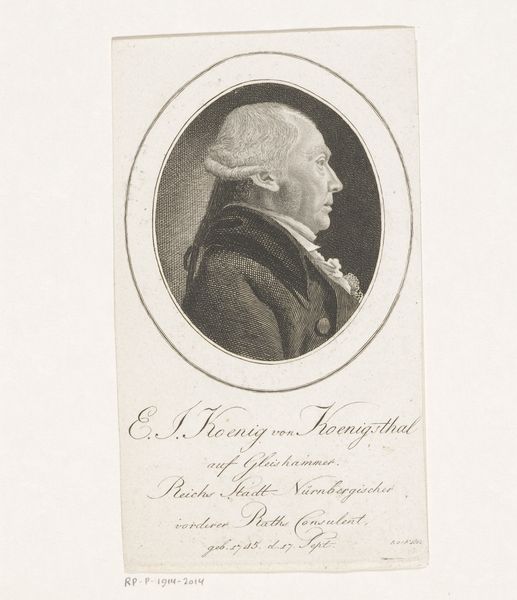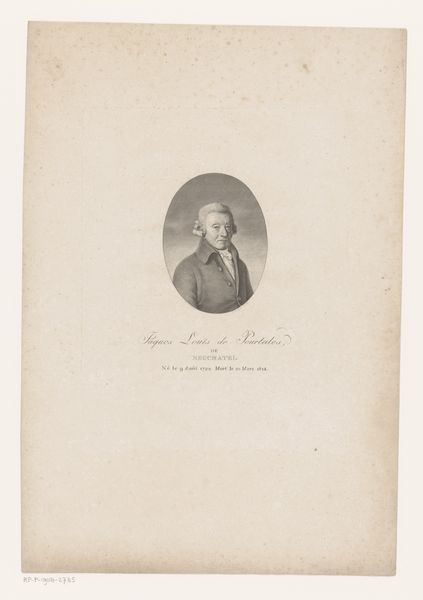
print, paper, engraving
#
portrait
#
neoclacissism
#
aged paper
# print
#
old engraving style
#
paper
#
engraving
#
monochrome
Dimensions: height 142 mm, width 108 mm
Copyright: Rijks Museum: Open Domain
Editor: This is a print from 1805 titled "Portret van Johann Michael Drechsler". It's an engraving on paper. What strikes me is the crispness of the lines, even though it has the aesthetic of aged paper. What do you see in this portrait? Curator: It's a fascinating window into early 19th-century society, isn't it? While ostensibly a portrait of Johann Michael Drechsler, a deacon, it's essential to consider what it *doesn't* show us. Notice the strict profile, the austere monochrome palette. This Neoclassical style was more than just an aesthetic choice; it was about projecting an image of order and reason during a period of immense social and political upheaval. Editor: So, the artist wasn't just trying to create a likeness? Curator: Not at all. Consider the historical context. The French Revolution had shaken the foundations of Europe, and there was a real anxiety about social order. Neoclassicism, with its emphasis on classical ideals, offered a way to project stability and authority. A profile like this, reminiscent of Roman emperors, visually equates Drechsler with a certain lineage of power, albeit in a religious context. Editor: I hadn't thought about it in relation to revolutionary anxiety. Does the choice of print medium also speak to that context? Curator: Absolutely! Prints allowed for wider distribution and dissemination of these carefully constructed images. It's a form of visual propaganda, if you will, aimed at reinforcing existing power structures, or perhaps reassuring those in power. What is made visible, and perhaps more importantly what remains invisible, becomes a critical issue. Editor: It makes me wonder about the lives of ordinary people at this time who, of course, would never have had their portraits done. Curator: Precisely! Who gets represented, and how, always reveals so much about the values of a particular society. Editor: Thank you, I learned a lot about Neoclassical portraiture today. Curator: Indeed. And by analyzing these images, we gain a greater insight of society itself.
Comments
No comments
Be the first to comment and join the conversation on the ultimate creative platform.
